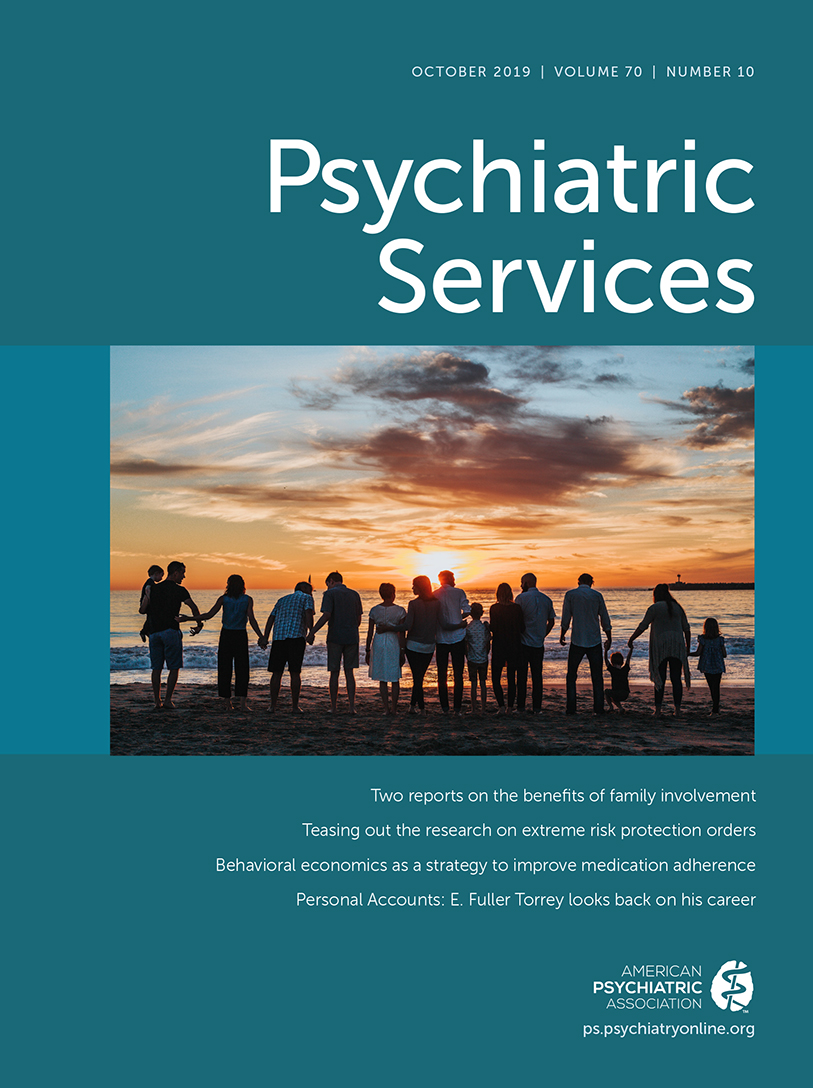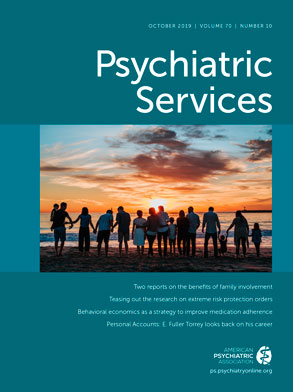Few evidence-based practices (EBPs) reach widespread use in clinical settings. The estimates for proliferation of evidence-based psychosocial treatments in public health settings is particularly bleak. In recognition of the need for research to more directly affect clinical care, implementation science has developed frameworks and methods to support the systematic uptake of EBPs into routine practice (
1). A classic theory that has deeply influenced the core tenets and language of implementation science is diffusion of innovations. Everett Rogers (
2) developed diffusion of innovations theory more than 50 years ago to explain what factors impede or facilitate uptake of innovations, which Rogers refers to as adoption. He classifies individuals based on the speed with which they adopt new ideas or technologies. The five adopter categories are innovators, early adopters, early majority, late majority, and laggards. Laggards, also referred to as late or nonadopters, are the last in a social system to adopt an innovation. Rogers describes laggards as “possessing no opinion leadership,” “isolates,” “resistant,” and “uneducated.” Late and nonadopters of EBPs are understudied (
3) and, we argue, largely misrepresented by implementation scientists and health services researchers to their own detriment. Diffusion of innovations is a critically important theory that has deeply influenced implementation science. We take issue with the term “laggard,” however, and wonder if the legacy of diffusion of innovations has resulted in a mischaracterization of this nonadopting group.
The Facts About Nonadopters
We recently published a study of non- and late-adopting providers in community mental health (
4), and we have completed data collection on another study of nonadopters of pharmacotherapy for opioid use disorder. We find these individuals can be characterized by nearly none of the adjectives Rogers used. First, they are not uneducated. In many cases, they are aware of the scientific evidence for a particular therapy and they refute it based on their own experience and the experience of others in their group. Neither are they isolated, nor do they lack opinion leadership (particularly in their provider network). If they are resistant, it is to researchers telling them how to treat their clients or to the idea of the superiority of internally valid empirical evidence over their own experience. Fidelity to a psychosocial practice is not seen as relevant, meaningful, obtainable, or of value to patient outcomes. Although we are troubled that more systematically collected, rigorous evidence was not the main driver of clinical care in these organizations, we felt empathy for these so-called laggards because we think they are unfairly portrayed and have valuable insights to offer. We believe that the field’s failure to acknowledge their viewpoint has hampered our efforts toward a more representative and thorough approach to implementation research.
There are three reasons why we think this adopter group deserves further examination, reconceptualization, and certainly a new moniker. First, Rogers described laggards as the tail end of a continuum of adoption and adopter categories, representing 16% of the population. Among mental health and substance abuse treatment providers, however, laggards (defined as providers who do not adopt EBPs) represent most community providers (
5). In other words, they are not lagging behind, they are the mode. Second, the terms “laggard” and “late adopter” imply that they will ultimately adopt. In reality, they are not simply “late” compared with other adopting groups; they may have made a conscious decision to not adopt under current circumstances. The term “laggard” perpetuates the top-down pipeline concept of disseminating research to practice and that providers are “empty vessels” who will eventually come around to the value of EBPs (
6). This characterization exacerbates the misperception that nonadopting providers are ignorant of the evidence base and leads to the development of ineffective implementation strategies such as repeated presentations of statistical evidence, or policy mandates that require use of EBPs. Third, and perhaps most important, by failing to liaise with this important nonadopting group, we miss the benefits that come from incorporating different practice viewpoints to inform and educate us about the design of implementation strategies to enhance uptake of the treatments about which we feel so passionately.
Eliciting and incorporating providers’ input through dynamic partnership to address the fundamental disconnect between researcher and provider is foundational to implementation science and community-partnered research (
6,
7). Efforts have included active strategies to engage frontline providers and to account for the inevitable modifications and adaptations of EBPs in real-world settings (
8,
9). Providers who participate in most EBP implementation studies, initiatives, and partnerships, however, often share a belief that EBPs comprise an important component of maximizing outcomes for people with psychiatric symptoms and that the use of EBPs should be increased. Our experience suggests that many nonadopters do not share this understanding. In many cases, this provider group does not value EBPs (at least the way that researchers conceptualize them) and has no interest in implementing them. Community-partnered research offers important principles and models for connecting with nonadopters. Researchers who wish to develop implementation strategies aimed at nonadopters need to approach them cognizant that there may be little shared understanding of the value of EBPs and that these providers may be actively disinterested in collaborating with a group whose ultimate goal is to change the provider’s practice. Consistent with the first principles of community-partnered research, these researchers must spend considerable time learning about the values of nonadopters and take very different approaches to implementation than traditionally have been tested.
The results of our nonadopter studies indicate that nonadopters are much more educated and aware than they often are depicted to be and highlight a need for designing and selecting implementation strategies that target the causal mechanisms and unique driving forces that inhibit EBP use in this group. Traditional implementation efforts include strategies like developing education materials, training, academic detailing, auditing and giving feedback, implementing learning collaboratives, and improving implementation leadership (
10). These are important strategies when targeted appropriately. It is highly unlikely, however, that these are effective avenues to secure buy-in or behavior change among late or nonadopters who refute the scientific evidence or see it as not applicable to the population they serve. Indeed, late adopters who were recipients of these strategies told us in our studies that they found data presentations on EBPs to be “remedial,” “heavy handed,” and “biased” and that they only served to increase their resistance. More research is sorely needed on the deployment of implementation strategies that affect attitudes toward traditional research findings and address and embrace ideology by broadening the latitude of acceptance toward research evidence.
Conclusions
Nonadopters have much to offer in teaching researchers about attitudes toward and the viability of EBPs in their settings. Joint collaborations with nonadopters can inform implementation strategies across the adopter continuum. It is imperative, therefore, that we include their heretofore underrepresented perspective in the design, selection, and implementation of any strategy to enhance the uptake of research in any setting. It is high time to retire the term “laggard” and bring this group into the conversation about implementation, both at the level of science and at the policy table. By mischaracterizing those who do not adopt EBPs as ignorant or isolated, we hurt them and we hurt ourselves in scholarship, but most of all, we hurt the people who suffer from behavioral health disorders. At the very least, let’s stop calling them laggards.

